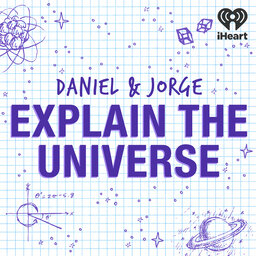Daniel answers Listener Questions about black holes, antimatter stars and why the Universe exists!
Daniel answers questions from listeners like you! Got questions? Come to Daniel's public office hours: https://sites.uci.edu/daniel/public-office-hours/
Learn more about your ad-choices at https://www.iheartpodcastnetwork.com
See omnystudio.com/listener for privacy information.
 Daniel and Jorge Explain the Universe
Daniel and Jorge Explain the Universe


